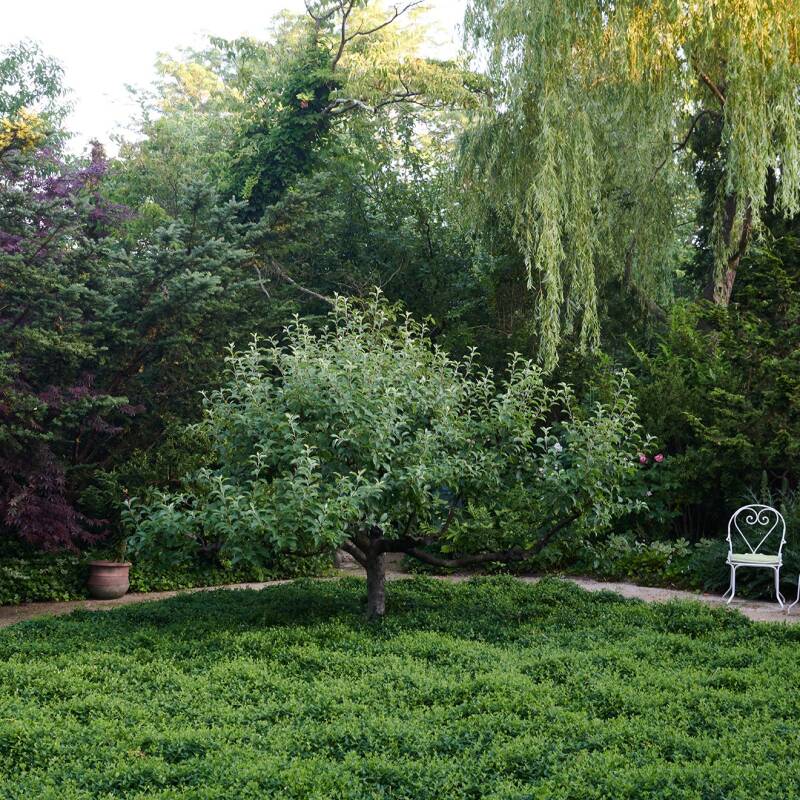We’ve all heard of the yellow rose of Texas (many of us have even have burst into song about it). But the Texas roses whose praises experts are singing these days are called EarthKind—and they are tough and stubborn enough to survive the villainous growing conditions of the Lone Star State:
‘Spice’ Rose
Above: A ‘Spice’ bush rose is $19.95 from The Antique Rose Emporium.
How does a rose earn an EarthKind designation? For the past 24 years specialists at the Texas A&M University AgriLife Extension Service have been laboring in test gardens to create a home gardener’s dream rose: varieties that thrive with minimal water, no pesticides or chemical fertilizers, and very little pruning. The result has been roses like ‘Spice’ (shown above).
Dr. Steve George of Texas A&M has been a leader in this research and he is the one who decides which roses are worthy of the trademarked EarthKind label. He has selected five which he says have met the EarthKind goal of being “beautiful roses for busy people.”
Dr. George describes ‘Spice’ (Above) as a “Bermuda Mystery Rose” because it was discovered on that island and was most probably brought there from Asia before 1810–possibly, he suggests, by pirates. Its name refers to its peppery fragrance. It reaches heights of about 5 feet and blooms successively from spring to fall.
‘Belinda’s Dream’ Rose
Above: Belinda’s Dream, a shrub rose developed by a mathematics professor in the early 1990s, was the first rose to receive the EarthKind designation. Photograph by Malcolm Manners via Flickr.
It boasts a 114-petal count. In the spring and fall (most of Texas is too hot for roses to bloom vigorously in summer) Belinda’s Dream is covered with gigantic flowers from 4 to 5 inches wide; $18.95 from Antique Roses Emporium.
‘Knock Out’ Rose
Above: Photograph by Ryan Somma via Flickr.
The original red Knock Out rose is resistant to black spot, a plague in hot, humid areas of Texas, so it can be grown all over the vast state. It is drought tolerant, requires virtually no maintenance, and is recommended for beginning gardeners or those who have had trouble growing roses. As Dr. George notes, people frequently think they can’t grow roses because they have been sold the wrong ones. Knock Out is $9.95 at Chamblee Roses.
‘Perle d’Or’ Rose
Above: Photograph by Malcolm Manners via Flickr.
Perle d’Or, a small shrub with apricot buds and fragrant golden pink flowers is easy to establish as long as it is not over-watered. It should not be planted in the far west or southwest part of the state where irrigation water tends to be highly saline. Perle d’Or can be purchased online for $8.95 at Chamblee Roses.
‘Souvenir de St. Anne’s’ Rose
Above: Photograph by Kurt Stüber via Wikimedia.
Souvenir de St. Anne’s is a dwarf shrub that grows to about 3.5 feet tall and so is good for small gardens. Its semi-double blooms are a delicate pink in spring and fall but turn white in summer. It is the most fragrant EarthKind rose but, like Perle d’Or, will not thrive where the irrigation water is highly saline; it’s $18.95 from Antique Rose Emporium. Photograph via Dreaming of Roses.
Tips for Choosing Roses:
When selecting EarthKind roses, it is important to make sure they are grown on their own roots and not grafted. They require eight hours a day of full sun and good air circulation (at least one foot of space all the way around) to hold down black spot. Texas gardeners are advised to plant roses in the fall because they don’t go dormant in winter and are able to get a head start before spring arrives. For more tips on planting and environmental soil management, see EarthKind Roses.
N.B.: This is the third in a series about the best roses to grow in different zones. For more, see:
- 5 Favorites: A Rose for All Regions, Northeast US Edition.
- 5 Favorites: A Rose for All Regions, Northern California Edition.
Finally, get more ideas on how to successfully plant, grow, and care for rose with our Rose: A Field Guide.
Finally, get more ideas on how to plant, grow, and care for various perennial plants with our Perennials: A Field Guide.





















Have a Question or Comment About This Post?
Join the conversation (10)